
How to lead train a puppy

Philippa Short
11 January 2022 | 6 minutes read
Training an excitable puppy on how to walk with a lead may seem impossible, but not to worry! Dog behaviourist expert Philippa Short gives you some handy tips on how to lead train a puppy.
Table of Contents
- Lead training a young dog
> How to make lead training more comfortable - Ideal places to walk dogs
- Is there anything that can go wrong with lead training a puppy?
- Common errors and things to avoid when lead training a puppy
> Harnesses and collars not fitting correctly
> Not being present on dog walks
> Excessive walk lengths
> Choke chains, half check collars, slip leads, flexi leads
> Forgetting their dog ID tag
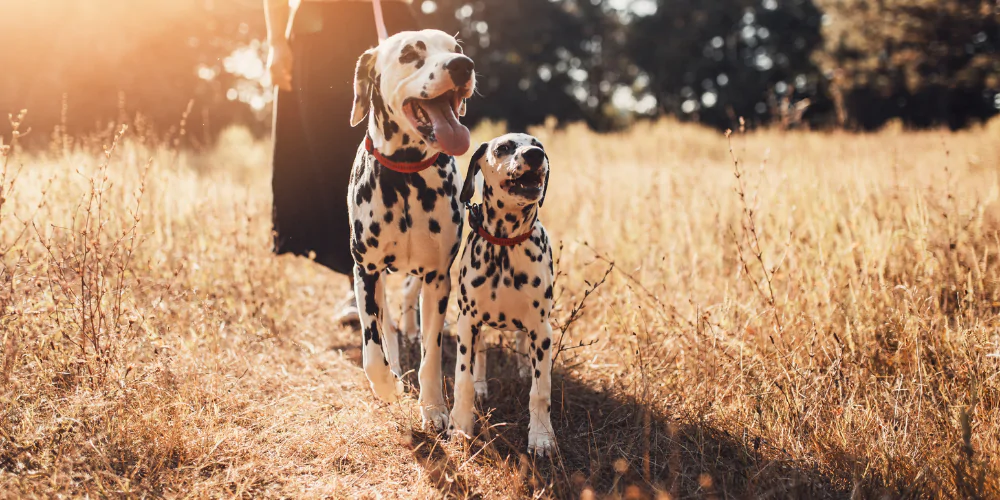
Lead training a young dog
Your puppy’s mental, emotional and physical needs are the most important thing to think about when training. While puppies can be excited for walks, they can also be nervous, so here’s some handy tips:
- To begin with, try walking your dog in your garden without a lead (if you have the space). This can help train your puppy to follow you in a safe environment.
- Remember, leads don’t train dogs, you do! Leads are just a legal precaution.
- Once they’re more comfortable with their gear, take your puppy out for a walk while wearing a lead and see if they follow alongside you.
- If your dog refuses to walk, stop with them. If they try to pull and steer you in another direction, simply wait until they realise they’re going the wrong way, or turn around and move in another direction.
- Keeping mind that you’re helping the puppy to walk in a new and exciting environment, so stay in teaching mode.
- The ‘let’s go’ cue lets your puppy know that it’s time for them to move along with you. This cue means they can explore anything or anyone in their path so long as they follow your direction.
To teach your puppy the let’s go cue during your walk, reward them for checking in with you or moving along when you say ‘let’s go’. Rewards can be a food-based treat or a positive verbal ‘well done’. With time, you’ll understand what rewards your dog responds to best. It’s completely normal for them to respond to one and not the other.
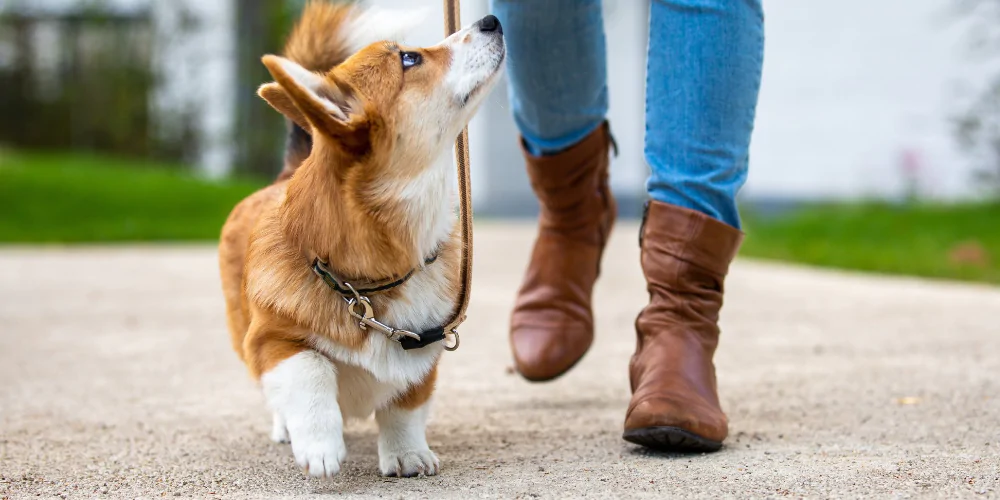
> How to make lead training more comfortable
To make lead training more comfortable for your puppy:
- You should never pull on their lead. Pulling on the lead can make your dog feel uncomfortable.
- While harnesses are more comfortable for your dogs when walking, collars are also okay to use.
- Slip leads should never be used for walks as they restrict your dog’s breathing.
- Timing your puppy’s walks is also key for comfort.
- Bringing toilet time into lead training can teach your dog that this is the best time to go, and help avoid accidents at home.
Keep in mind that your puppy is beginning to learn their daily routine, so disruptions to this structure could affect their walks. For example, walking before they’ve eaten can make your puppy fret and think you’ve forgotten it’s lunchtime.
Your environment will also affect your puppy’s experience. Taking them for a walk at night (with bright lights from streetlamps and cars) may make them feel scared or over-stimulated.
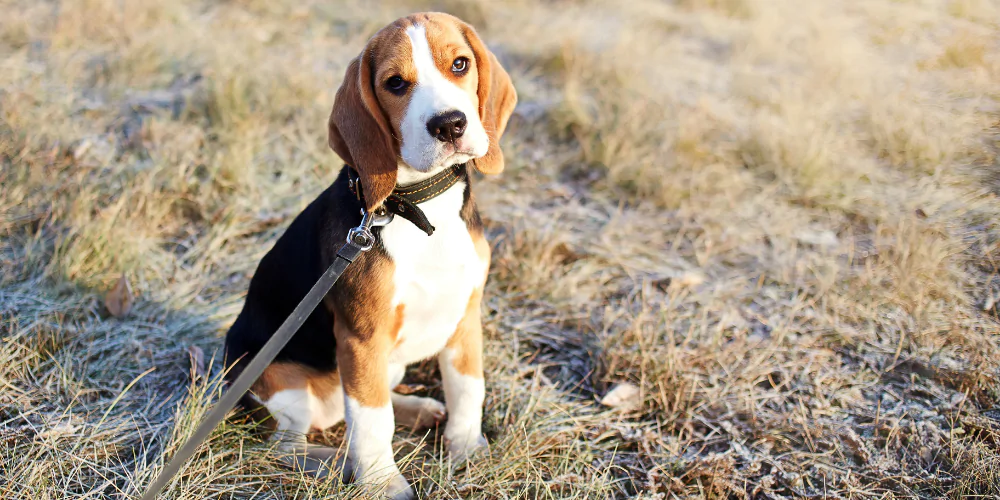
Ideal places to walk dogs
You’ll want to get your dog comfortable with a variety of surfaces (such as grass and gravel) so it doesn’t particularly matter which one they train on.
Remember to always be mindful of the temperature of the surface. Surfaces that are too hot could cause blistering while surfaces that are too cold may give your dog frostbite.
- To begin with, try lead training your dog in quieter areas where there are fewer dogs and people to distract them.
- If you want to teach your dog about traffic, try a quiet cul-de-sac where it’s not too busy or dangerous.
- Some of the ideal places to train your puppy are safe dog walking fields. These are enclosed spaces for your dog to roam free and give you plenty of room for lead training.
- Search online for dog walking fields local to you – some are free access while others are private and have time slots that can be booked for a fee.
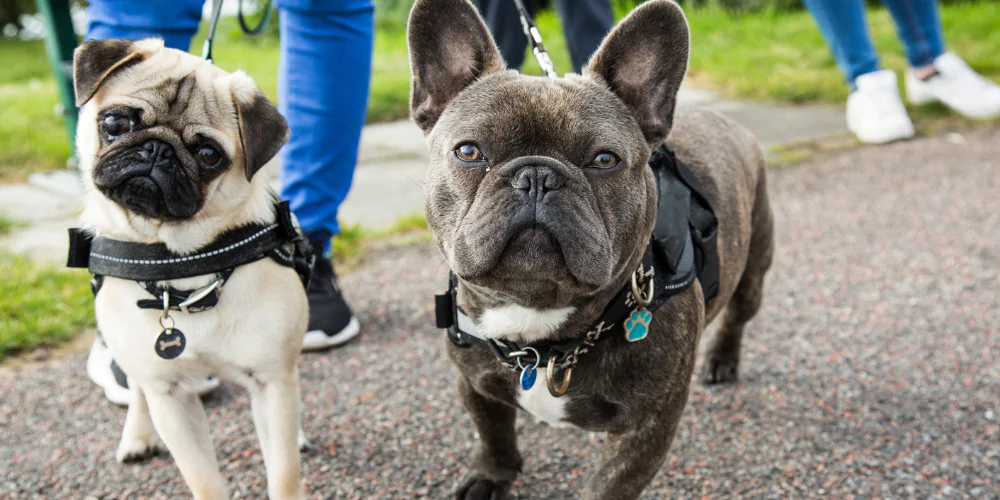
Is there anything that can go wrong with lead training a puppy?
Being impatient, tough, or shouting at your puppy when training can cause them to shut down or shy away from walks in the future.
- Try to be as patient as possible with them.
- Always be in teaching mode – treat any mistakes as an opportunity to teach your puppy how to behave correctly.
- If something gets too much for them, remove them from the situation.
- This could be taking your dog home when they become too stressed or taking them away from other dogs and going elsewhere for the rest of the walk.
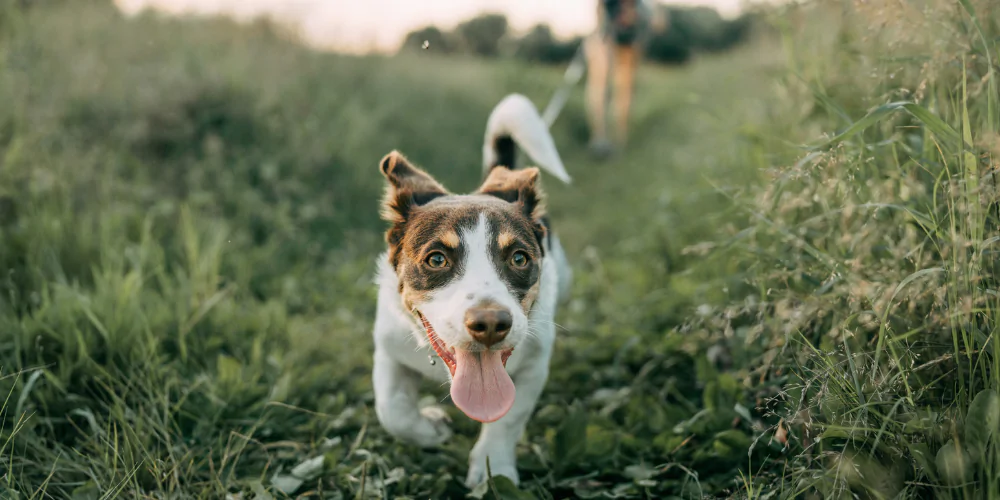
Common errors and things to avoid when lead training your puppy
> Harnesses and collars not fitting correctly
If a harness and collar don’t fit your dog properly, this could restrict movement and possibly their breathing. This can then create phobias and even discomfort or pain from chafing.
> Not being present on dog walks
Teaching them how to behave correctly and being present on dog walks can be life-saving. We’re talking:
- Making sure you’re aware of what they put in their mouths.
- Thinking ahead of time about their surroundings, such as whether they’ll be around children or sharp objects.
Being present on walks helps build a relationship with your puppy.
> Excessive walk lengths
Don’t walk your puppy for longer than they want to when lead training. If your walk is only as long as the end of your street, then that’s where the walk ends. This is how you can show your puppy you prioritise their physical, emotional, and mental wellbeing above anything else.
> Choke chains, half check collars, slip leads, flexi leads
Be wary of using choke chains/collars, half check collars, slip leads, or flexi leads when walking your dog. These can teach them to pull away when walking and can also be uncomfortable to wear. Try to stay away from any products that are anti-pull as these are designed to constrict your dog.
> Forgetting their dog ID tag
As you begin lead training your puppy, keep in mind that they need to wear an ID tag. This should state your name and address and can be attached to their collar or harness. It’s a legal requirement for your dog to wear an ID tag at all times outside of the home.
Welcoming a new puppy into your life? We offer flexible insurance for dogs.


